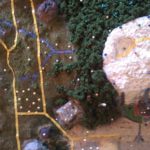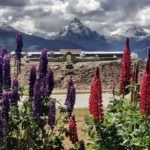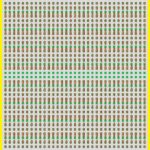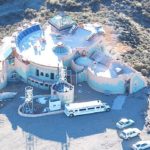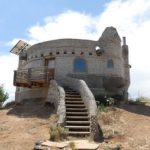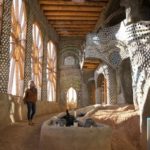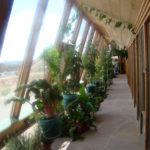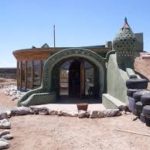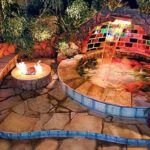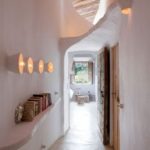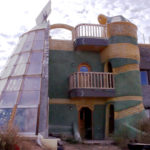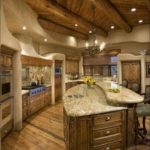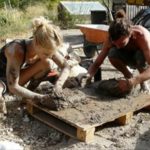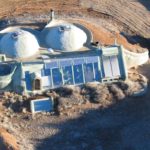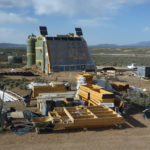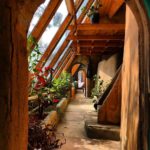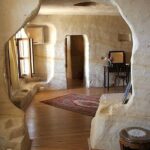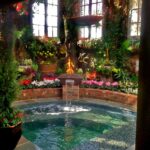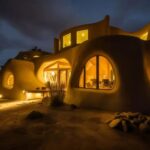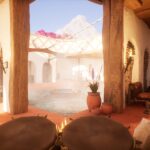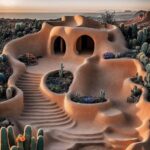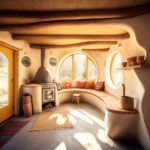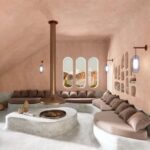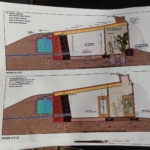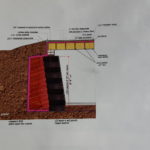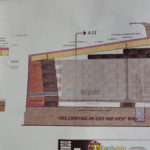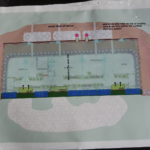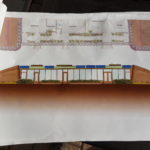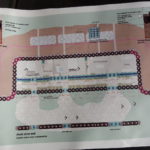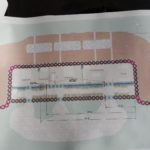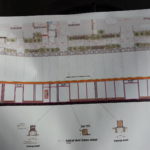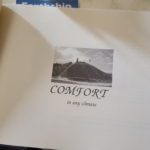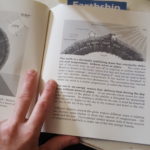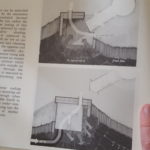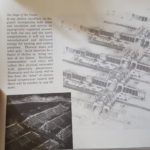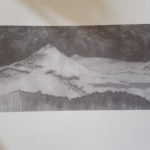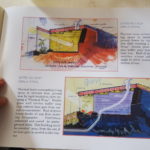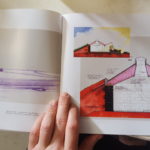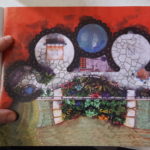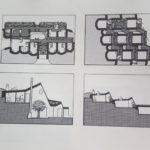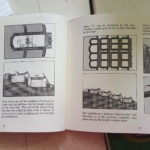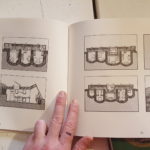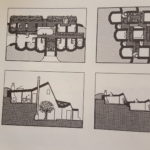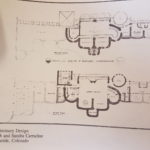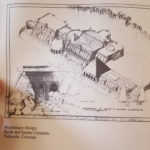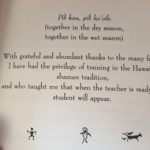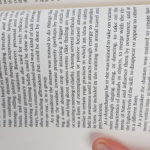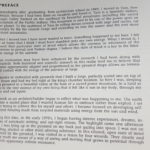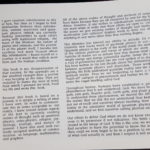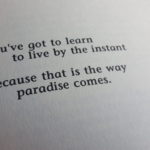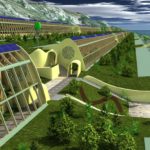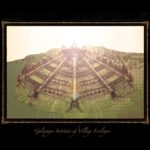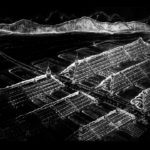These are the type of home made from three walls being heat-retaining berms, and the 4th being a greenhouse facing the path of the Sun.
–
Table of Contents:
- Introduction
- Dimensions & Layout
- Population Over Time
- Special Features
- Novels Excerpt
- Location & Overall (Images Begin)
- Examples & Concepts
- Professional Designs
- Auz Practicing Building Earthships
- Wisdom from the Earthships Book
- Neighborhood Layout Proposals
–
Introduction:
This 100% biodegradable house type is called an Earthship, and in Inisfree there are large neighborhoods of them, the sum of which covers a full square mile. Earthships are made from building materials which are largely salvaged, such as glass bottles, reclaimed floor wood, and used tires. Cement and wood are almost never used in the making of these homes, the idea being that they are not intended to be permanent or hand-me-downs; made without even harming a single tree or animal, they will also not even harm the earth upon which they sit… as they finally start to gracefully return to it.
To learn how to make one of your own, see Earthship Biotecture, based in New Mexico.
–
Dimensions & Layout:
Earthships are typically one-story houses built low to the ground, often half or completely hidden under a hill, and may extend for up to several rooms along a single axis. Few have basements, but there is always plenty of storage space in each, including troughs both inside and out for gardens. Earthship neighborhoods are arranged almost chaotically, with winding trails to get to each, no streets or other central roadways for vehicular traffic, and, thereby, are very difficult to spot by the untrained or unexpecting eye. Because they are so oddly arranged, often widely dispersed to help maintain the lowest possible impact on the local terrain and biosphere, the area of land all the Earthships in Inisfree are built upon is the largest plot on this side of Inisfree’s central mountain.
That section of Inisfree’s surface terrain is called the Earthships neighborhood. Its topography ranges from being up to ~.8 of a mile above Inisfree’s ‘ground/base/perimeter level’… to ~.25 of a mile above that level. This gives our community of Earthships a great slope change, over the span of a full mile, of almost 3,000’; 300 stories. In other words, this neighborhood in Inisfree has hundreds of terraces, resulting in outstanding water-flow, as well as prime growing conditions for certain crops, such as strawberries.
Originally, the founder of Inisfree thought there’d be room for only 20 or 30 Earthships as just a small part of the whole sustainable community. This was back in 2007 when it was first decided to include those clever homes in the city called Inisfree. In the allotted square mile, however, it was later determined, even with plenty of dispersion, it turns out you can fit closer to ~2,500 of them, or well over 10,000 “tiny houses”. That means ~80,000 people can live comfortably in a single square mile (or 10,000 people very comfortably; just a few to each house, which is a normal family size), all with zero energy bills, zero water bills, and zero grocery needs –and that’s not counting the capacity of potential basements and other buildings which could become part of this neighborhood, or what would happen if bunk-beds were used instead of normal beds and bedrooms (which would allow for a population closer to one million people here, and which would still be comfortable, given the polyamory culture of our community).
–
Population Over Time:
Roughly 1 more person made this neighborhood/structure his/her home (or at least their 2nd/vacation home) every ~2 years from 2013 to 23000 A.D..
- 2013: the first guest or resident here
- 2022: ~7 living in this neighborhood this year
- ~23000 A.D. and beyond: ~13,000 at capacity
–
Special Features:
This type of dwelling pioneered one of the most efficient plumbing and water usage systems in history; every Earthship collects rainwater on its roof and first uses it for bathtubs, sinks, and showers, then passing that water into the toilet tanks, then on to the plant troughs and rest of the garden, and finally back out into the surrounding earth as a natural septic tank. Potable water is repeatedly used in this system until it becomes ‘gray water’ and then ‘black water’. The non-crop plant areas, their topsoil and bedrock, and other systems in Inisfree, then purify and recycle the water at that final point in its journey through each Earthship and our Earthships neighborhood.
Inisfree’s Earthships are also built in days or even hours, not weeks, as was the case with human-made Earthships, because we utilize Inisfreeans, who are vastly superior to humans in terms of thinking, imagining, planning, logistics, fabrication of materials, construction, inspecting, and stamina. Inisfreeans always have the best ideas and ways of doing things. They always have plenty of energy, and can disregard all weather, hunger, and the fatigue other lifeforms encounter. Though there are thousands of Earthships in Inisfree, it did not take our community thousands of weeks (hundreds of years) to build them; thanks to the Inisfreeans building them, this entire neighborhood of them was completed in the same amount of time it would take most humans to build a single one.
–
Novels Excerpt:
From that CPK, Auz showed her to the city’s neighborhood of homes called Earthships. Each Earthship had three earthen walls in a c-shaped berm, and was completed by a slanted greenhouse serving as its fourth. Tile floors, normal furniture, walk-in showers, and other creature comforts could be found in all Inisfree’s Earthships. Each one housed three or more residents, with room for about a dozen of their guests.
Walking up the Earthships terrain to its higher-side border where another section of the Glowing Art Highway sat, he guided her under that stretch of gold-and-white masonry topped by silent mobile-houses, luxury motorcoaches, and cars. Between two of the female-statue supports of the highway they walked, the whole area still healthily covered in soft flora such as grass and flowers. A blanket-like green moss also grew around the feet of the support-statues.
–
Location & Overall:
The final image in this album is a map showing how ~1,000 average to big-sized Earthships can fit in this square-mile. Extrapolating from that, we can all picture how ~2,500 small to average-sized ones can be terraced a bit more closely together. With all the space below them (the silos network), it should make sense how another several tens of thousands of people can live and visit here –and ten times that many during neighborhood-wide super-parties.
–
Examples & Concepts:
–

–
Professional Designs:
–
Auz Practicing Building Earthships:
–
Wisdom from the Earthships Book:
–
Neighborhood Layout Proposals:
–
Also:
- New Dawn (Edit) – by William Aura – for meadows, greenbelts, Taja, shires, earthships, glamp, ryok, cabin
_

